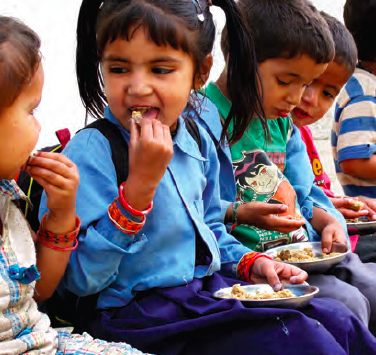The SUN Movement Common Results Framework: Understanding the CRF and lessons learned from five SUN countries
This is a summary of an ENN Review of the SUN Common Results Framework (CRF) written by Tamsin Walters, which brings together background thinking and five examples of country level implementation in Tajikistan, Madagascar, Nepal, Niger and Peru. The full report is available here.
Special thanks go to Patrizia Fracassi from the SMS for guiding the overall focus of this work. Thanks also to Paola Victoria, Fanny Granchamp and Delphine Babin-Pelliard for assistance with Peru and Madagascar case examples and to Bjorn Ljungqvist for sharing experiences from Niger. Also many thanks for contributions to the Peru case study to José Velásquez, Director of Social Policy and Evaluation Monitoring and Evaluation, Ministry of Development and Social Inclusion (MIDIS) and Maria Rosa de Boggio, Advisor of the Roundtable for the Fight Against Poverty.
Interviewees and reviewers for case examples included civil society and government representation for Peru and Madagascar; UN and government representation for Nepal and Tajikistan. Global stakeholders interviewed included donor, UN, independents, SUN civil society and private sector representation.
The ENN gratefully acknowledges the support of Irish Aid
who funded this review.
What is a CRF?

The 2014 SUN Movement Progress Report describes a CRF as a single and agreed set of expected (or common) results generated through the effective engagement of different sectors of government and the multiple (non-government) actors who have capacity to influence people’s nutrition. This set of results should be based on the national goals and targets for nutrition and reflect the ways in which different sectors and actors can best contribute to the achievement of these targets through their individual and collective actions. While the ‘results’ referred to in a CRF are guided by the 1,000 days window of opportunity to improve nutrition, CRFs may also include targets for obesity and/or overweight reduction.
- The ENN review finds that SUN Movement global advocacy has played an important role in bringing awareness to nutrition and gaining high-level political commitment to move processes forward. Studies on the cost of hunger and economic effects of malnutrition have also proven effective in some countries. However, the role of nutrition champions in high-level positions at national level cannot be underestimated.
- The process of bringing stakeholders together from across ministries, donors, United Nations (UN) agencies, civil society, academia, the private sector and the broader population requires a high-level convenor. Where SUN Focal Points are based in a sectoral ministry, such as the Ministry of Health, their ability to convene across sectors is often compromised and plans may be skewed towards activities of their sector.
- The case examples reveal that missed opportunities to engage a range of actors can result in weaker plans, with challenges arising at the implementation stage. Madagascar, Niger and Peru are examples of countries where there has been recognition of the need for early consultation with the sub-national level stakeholders to inform improved planning.
- One of the first hurdles to overcome is finding a common ground for multiple stakeholders to engage in and invest in. As each sector has its own operational plan and faces competing priorities, adding nutritional indicators may be viewed as a burden and a distraction from their core business. The review highlights that a substantial amount of high-level advocacy may be required to raise awareness and understanding of nutrition as an issue that cuts across a range of sectors.
- At the implementation stage, country experiences advocate starting slowly, with gradual build-up of coverage of interventions. Strong coordination teams are required at provincial/district level to link budgets, plans, monitoring and accountabilities.
- The development of a CRF is a process that may take years rather than months as it requires the commitment of a variety of different sectors and stakeholders to establish a relevant, feasible and workable CRF.
- A key issue around funding of CRFs remains. It is unclear how donor funds are contributing to the processes of developing and implementing CRFs as the links between the global level (SUN donor network) engagement and country level appear weak.
- The author concludes by raising the question on how CRFs resonate with fragile and conflict-afflicted states and the particular challenges they face. Capturing experiences from more SUN countries in such contexts would assist learning around how the humanitarian perspective is incorporated into CRF processes and how humanitarian approaches are considering multi-sector engagement.

